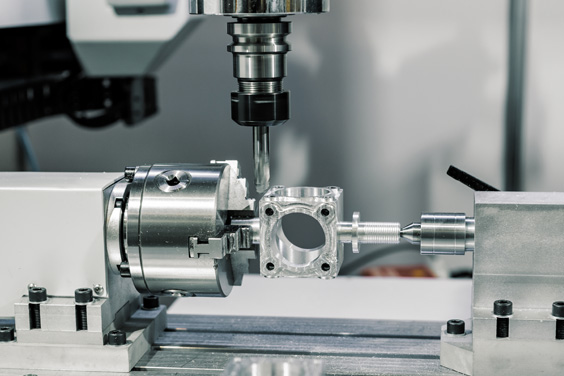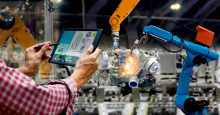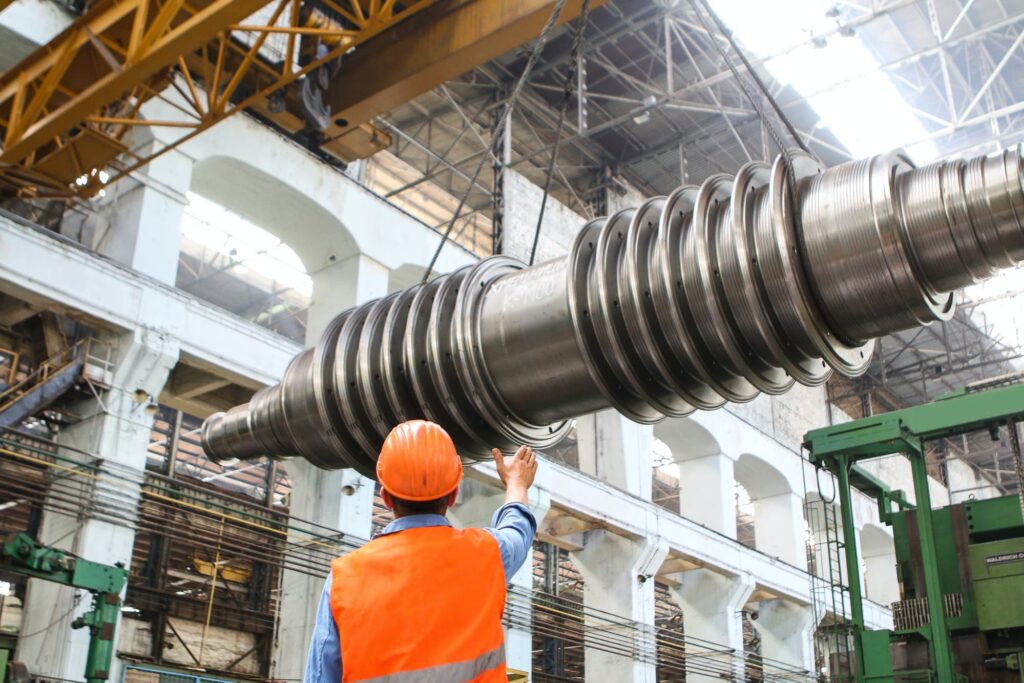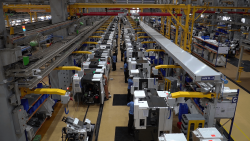Manufacturers had the worst hit from the COVID-19 pandemic. With factories shut and virtually no production, manufacturing companies had no choice but to work out a solution through remote working also known as the work-from-home model. But with more than 60% of their workforce belonging to physical work, challenges were aplenty for manufacturers.
The physical constraint
Manufacturing per se is all about the physical world- raw materials, working in close contact, deliveries, orders; everything needs human intervention. With the pandemic that demands many physical restrictions, it's easy to understand why manufacturing is severely affected. Manufacturers who have adopted automation as parts of their process are not as affected. But they still make up only a small percentage of the demographic.
Manufacturing is dependent on collaborative processes, these collaborative processes are usually managed across a variety of disconnected systems including email, paper, pen, excel sheets, and enterprise systems like CRM, etc. Consequently, this makes it hard to manage these processes without the need for frequent in-person meetings, status updates, and reviews which increase the risk of COVID-19.
Adapting means surviving
With the percentage of non-production staff and knowledge workers anywhere between 25% and 50% of total workforce strength, manufacturers need to enable remote work for these employees immediately.

At AceMicromatic Group Harish B Vice President, Micromatic Machine Tools, recollects how quickly things changed, “ Thanks to Corona Pandemic, we quickly learned to effectively use the available software tools and video conferencing apps to innovate and move decision making plus training from physical to virtual meetings. During the 40 day lockdown, we delivered 52 training programs to 657 employees clocking 12,293 hours of training covering technical and soft skills subjects. During the 40 days lockdown, 100+ meetings were held across our 55+ branches and office locations across India. Our employees, franchisees, and service associates quickly adapted to Video Conferencing for training sessions and business decisions like a duck take to the water. Employees were fully engaged with technical training sessions, CRM, and branch review meetings for several hours every day.”
This is not only safer for those employees who are working from home but also safer for those on-site workers at the plant. Once some processes are in motion and are stable going about other issues will be more productive.
Getting into the right mindset
In manufacturing, things are done differently. When for a long time these processes have worked, when there needs to be a sudden shift to virtual working the changeover has to be done effectively. T K Ramesh, MD, and CEO of Micromatic adds,” Like all sudden and forced situations, the learnings that need to be foremost on one’s mind are a clearer and more holistic understanding of customers and your purpose for being with them. Learning and adapting to the changing situation and needs, that change happens in small steps and suddenly tips over. This forced change perhaps adds something that was always there but not heeded is responsible for consumption and holistic sustainability.”
So when things are in perspective, finding the drive to work as efficiently as possible in the current situation is a must. This can be possible with digital tools.
- First things first: Establish cloud-based digital tools that are easy to implement and use by all employees.
- Shift to virtual conferences: technologies like Microsoft team, google meet, zoom are Photo, and video technologies can be leveraged to resolve the vast majority of these problems related to engineering. Studies show that video conferences are
- Time to move data: physical data is vulnerable to many types of damages. In practice, your data is likely to be far more secure when it is hosted on the cloud. Today, more than 66% of manufacturers now use cloud technology.
- Allow mobile devices to be used for communication.
- Most manufacturing companies think that smart devices are a distraction. But it is also a portal to many tools that make communication and decision making easier. Changing to what is more effective should drive decisions and technology is the right direction to move in.

And with no other options until the virus slows down, here are some practices to follow to make the best of the remote working situation.
1. Staying connected
One of the most important things to do when you’re working from home is to stay in contact with your team as well as any clients with whom you work. The lines of communication should remain as open as when you’re in the office, if not more so.
2. Making online meetings effective
Part of staying connected holding regular meetings. If you are participating through video-call from home, take care to maintain professionalism. Keep the meeting effective and professional by creating an agenda before it begins and ends with action points.
3. Efficiency from home
With remote work, it's not easy to concentrate. Making a checklist will help keep the focus.
Studies show that
Workers waste about 40% of their day because of disorganization, so creating a daily plan with a check-list will bring some clarity to daily duties.
A study shows that about 71% of people feel more focused when they do
an hour of standing time, while 66% feel more productive.
CBS News reports that a change of environment will make workers more productive as well.
When employers keep in mind the current situation and work around the restrictions then some solution is bound to be found. But investing is digital tools and other means that are less reliant on human intervention should be a priority going forward.
One thing to note is that this is not specific to certain industries or countries when the issue is global then knowing that everyone is going through the same changes should be motivational to change for a better future. Keeping the mind clear and peaceful is key to getting efficient output from work.




 India
India
 China
China
 Europe
Europe









 At AceMicromatic Group Harish B Vice President, Micromatic Machine Tools, recollects how quickly things changed, “ Thanks to Corona Pandemic, we quickly learned to effectively use the available software tools and video conferencing apps to innovate and move decision making plus training from physical to virtual meetings. During the 40 day lockdown, we delivered 52 training programs to 657 employees clocking 12,293 hours of training covering technical and soft skills subjects. During the 40 days lockdown, 100+ meetings were held across our 55+ branches and office locations across India. Our employees, franchisees, and service associates quickly adapted to Video Conferencing for training sessions and business decisions like a duck take to the water. Employees were fully engaged with technical training sessions, CRM, and branch review meetings for several hours every day.”
This is not only safer for those employees who are working from home but also safer for those on-site workers at the plant. Once some processes are in motion and are stable going about other issues will be more productive.
At AceMicromatic Group Harish B Vice President, Micromatic Machine Tools, recollects how quickly things changed, “ Thanks to Corona Pandemic, we quickly learned to effectively use the available software tools and video conferencing apps to innovate and move decision making plus training from physical to virtual meetings. During the 40 day lockdown, we delivered 52 training programs to 657 employees clocking 12,293 hours of training covering technical and soft skills subjects. During the 40 days lockdown, 100+ meetings were held across our 55+ branches and office locations across India. Our employees, franchisees, and service associates quickly adapted to Video Conferencing for training sessions and business decisions like a duck take to the water. Employees were fully engaged with technical training sessions, CRM, and branch review meetings for several hours every day.”
This is not only safer for those employees who are working from home but also safer for those on-site workers at the plant. Once some processes are in motion and are stable going about other issues will be more productive.
 And with no other options until the virus slows down, here are some practices to follow to make the best of the remote working situation.
And with no other options until the virus slows down, here are some practices to follow to make the best of the remote working situation.


